This year marks the 10th anniversary of the Belt and Road Initiative (BRI). Over the past decade, infrastructure connectivity has become more accessible through Belt and Road cooperation.
The following are some key infrastructure projects under BRI. Let's take a look.
Jakarta-Bandung High-Speed Railway
The Jakarta-Bandung High-Speed Railway connects Indonesia's capital Jakarta and West Java's provincial capital Bandung.
With a design speed of 350 km per hour, the railway spanning 142.3 km will cut the journey between the two cities from over three hours to around 40 minutes.
It is the first overseas high-speed railway project that fully uses Chinese railway systems, technology, and industrial components.
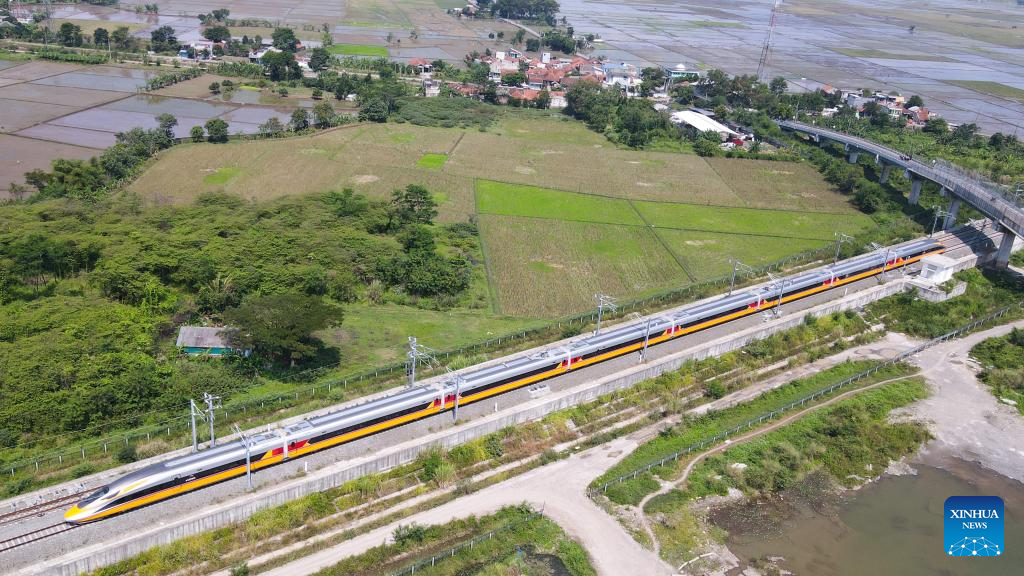
This aerial photo taken on June 22, 2023 shows a comprehensive inspection train running along the Jakarta-Bandung High-Speed Railway in Bandung, Indonesia. The comprehensive inspection train (CIT) of Jakarta-Bandung High-Speed Railway (HSR) reached 350 km per hour, the design speed, for the first time on Thursday during the joint commissioning and testing phase. (Xinhua/Xu Qin)
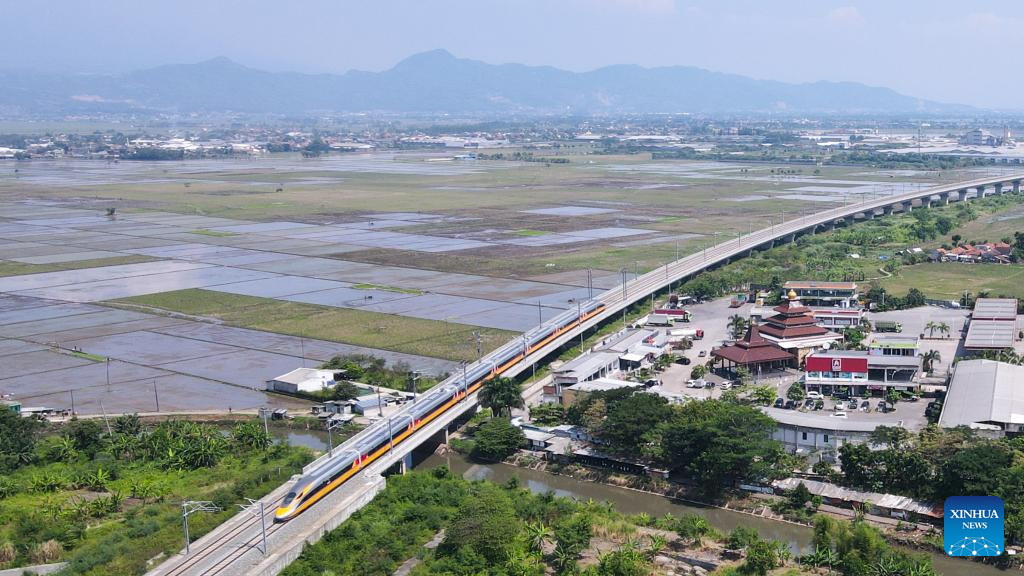
This aerial photo taken on June 22, 2023 shows a comprehensive inspection train running along the Jakarta-Bandung High-Speed Railway in Bandung, Indonesia. The comprehensive inspection train (CIT) of Jakarta-Bandung High-Speed Railway (HSR) reached 350 km per hour, the design speed, for the first time on Thursday during the joint commissioning and testing phase. (Xinhua/Xu Qin)
China-Laos Railway
The China-Laos Railway, a landmark project showcasing high-quality Belt and Road cooperation, began operation in December 2021. The railway also serves as a docking project with Laos' strategy to convert itself from a landlocked country to a land-linked hub.
After its launch in 2021, passenger train services have been offered along the section between Kunming and the Chinese border town of Mohan, as well as the section connecting Vientiane and Boten, the border town on the Lao side. On April 13, 2023, the China-Laos Railway launched its cross-border passenger services.
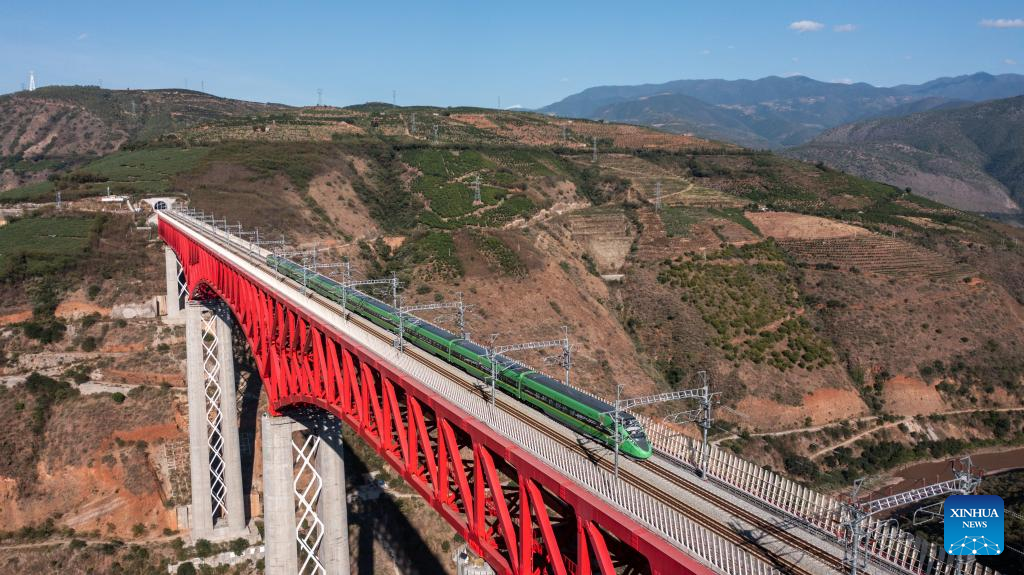
This aerial photo taken on Nov. 23, 2022 shows a Fuxing bullet train running on the Yuanjiang bridge of the China-Laos Railway in southwest China's Yunnan Province. (Xinhua/Hu Chao)
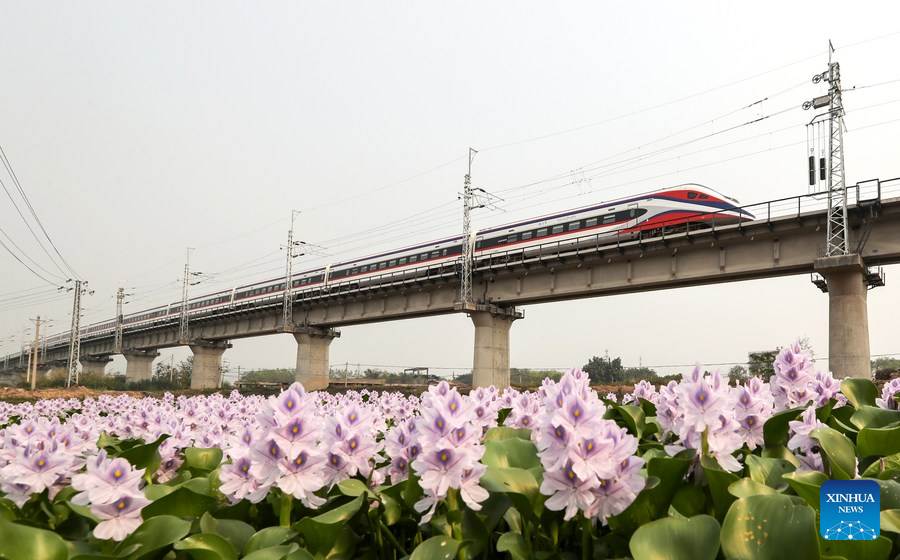
The first cross-border passenger train departing from the Lao capital Vientiane to Kunming, the capital of southwest China's Yunnan Province, runs on the Ganlanba bridge of the China-Laos railway in Xishuangbanna Dai Autonomous Prefecture in Yunnan Province, April 13, 2023. (Xinhua/Shan Yuqi)
China-Pakistan Economic Corridor
Launched in 2013, the China-Pakistan Economic Corridor (CPEC), a flagship project of the China-proposed Belt and Road Initiative (BRI), is a corridor linking the Gwadar port in southwestern Pakistan with Kashgar in northwest China's Xinjiang Uygur Autonomous Region, which highlights energy, transport and industrial cooperation.
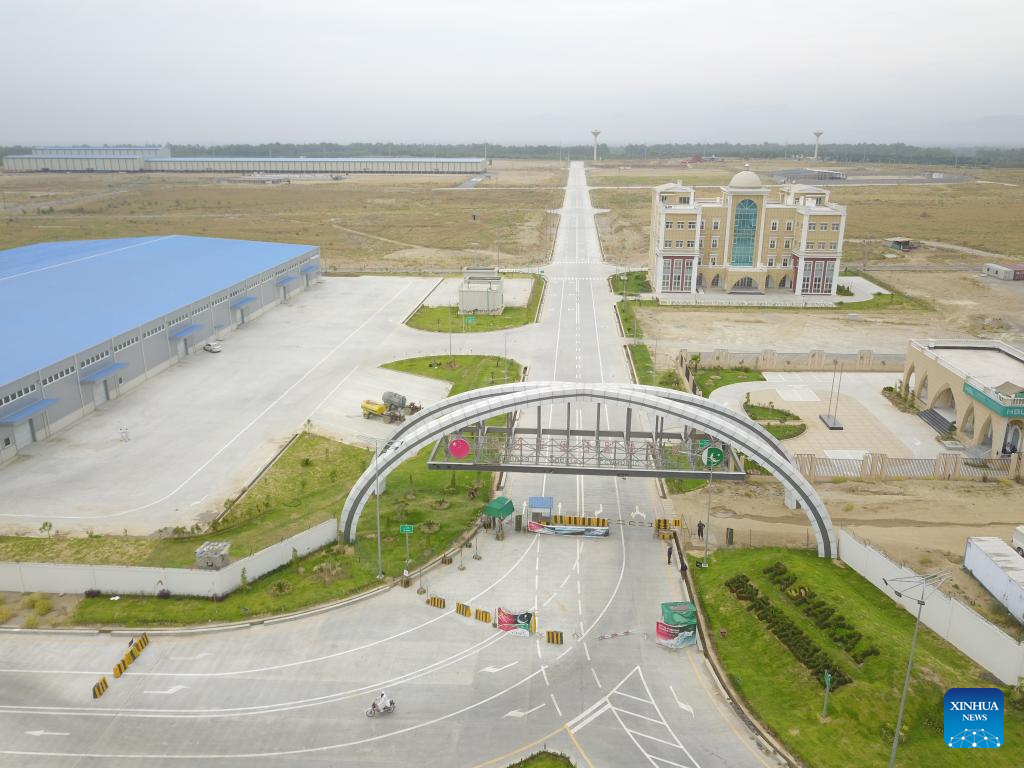
This aerial photo taken on May 23, 2023 shows the Rashakai Special Economic Zone under the China-Pakistan Economic Corridor in the northwest Khyber Pakhtunkhwa province of Pakistan.(China Road and Bridge Corporation/Handout via Xinhua)
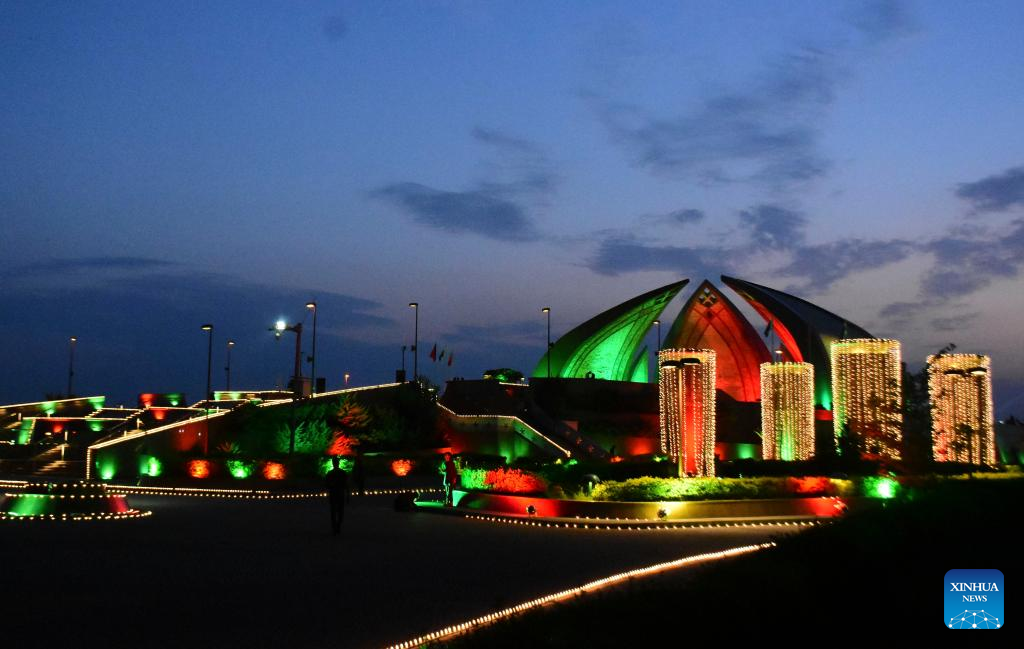
This photo taken on July 29, 2023 shows the Pakistan Monument with a special illumination to celebrate the 10th anniversary of the launch of the China-Pakistan Economic Corridor (CPEC) in Islamabad, capital of Pakistan.(Str/Xinhua)
China-Europe Railway Express
Some 77,000 China-Europe freight train trips have been made over the last 10 years, providing services for 217 cities in 25 European countries.
In the past 10 years, China-Europe freight trains have transported 7.31 million twenty-foot equivalent unit (TEU) containers of goods worth a total of 340 billion U.S. dollars.
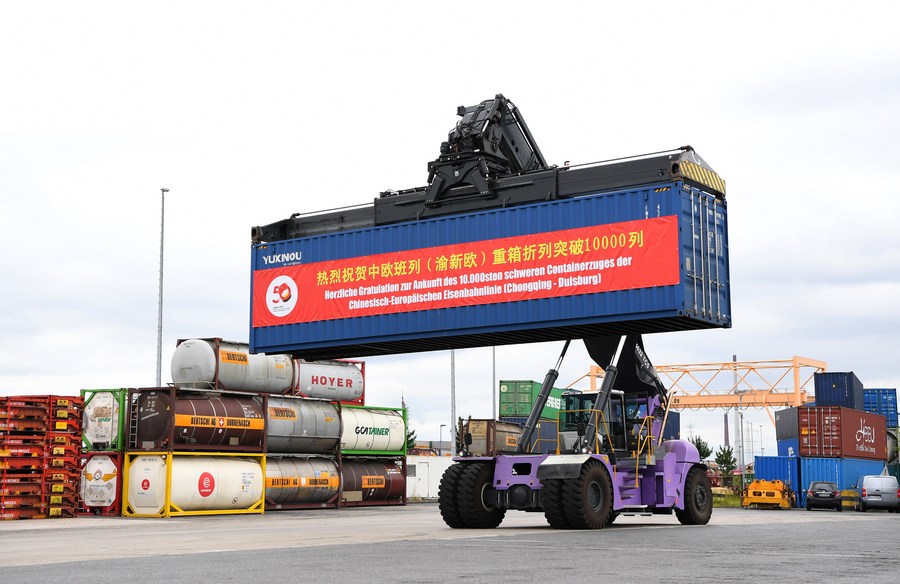
This photo taken on July 11, 2022 shows a scene from the welcome ceremony for the 10,000th trip made by China-Europe freight trains operated by the China-Europe Railway Express (Chongqing) in Duisburg, Germany. (Xinhua/Ren Pengfei)
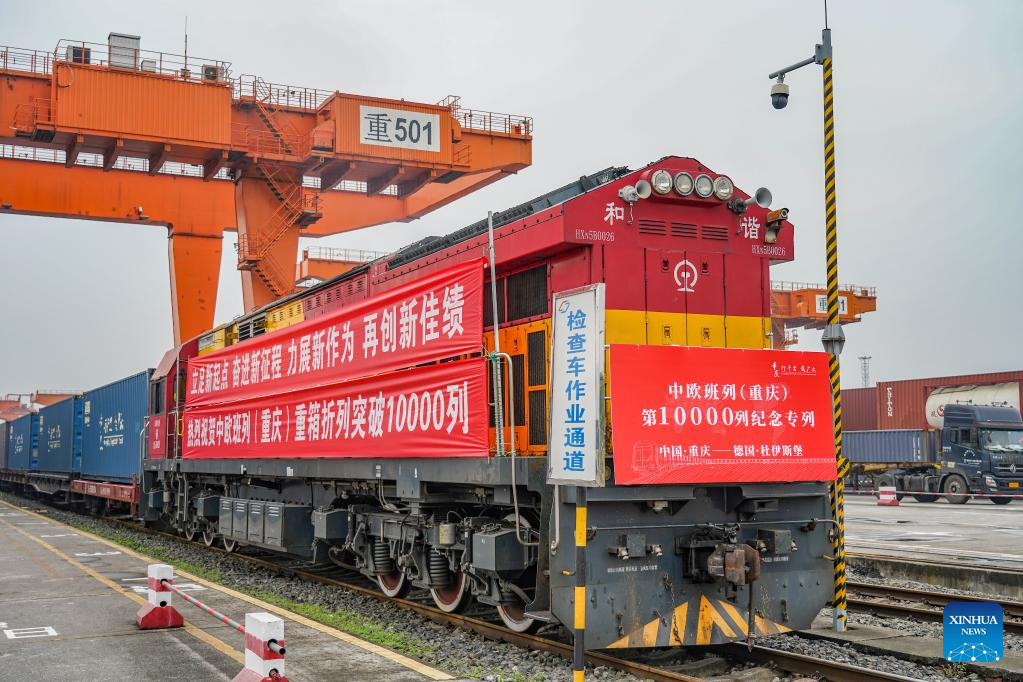
A cargo train marking the 10,000th trip made by China-Europe freight trains operated by the China-Europe Railway Express (Chongqing), waits for departure at Tuanjie Village Central Railway Station in Chongqing, southwest China, June 23, 2022. The cargo train, fully loaded with electronic products, mechanical parts and daily necessities, Thursday departed from a railway station in southwest China's Chongqing Municipality and headed for Germany's Duisburg. (Photo by He Jianchi/Xinhua)
New International Land-Sea Trade Corridor
Launched in 2017, the New International Land-Sea Trade Corridor is a trade and logistics passage that was jointly built by provincial-level regions in western China and ASEAN countries. It is also one of the key projects under the Belt and Road Initiative (BRI).
Over six years of rapid growth, the land-sea corridor program has enabled western Chinese provinces and regions to form close links with global markets, especially in ASEAN member nations, sending their cargo to 393 ports across 119 countries.
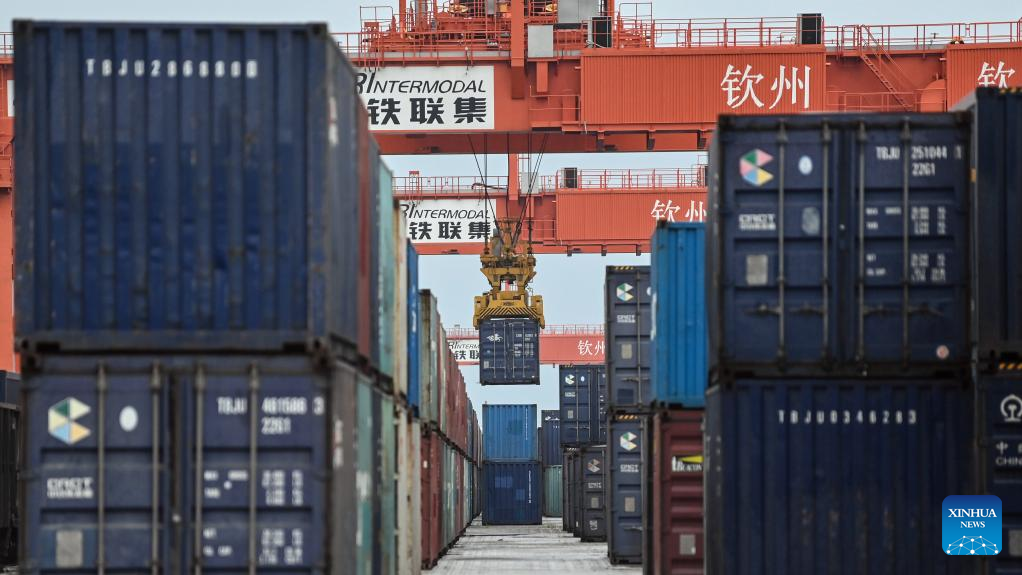
A crane unloads containers at a railway container distribution center in Qinzhou City, south China's Guangxi Zhuang Autonomous Region, May 11, 2023. With boosts from the Regional Comprehensive Economic Partnership (RCEP) and the Belt and Road Initiative (BRI), the New International Land-Sea Trade Corridor saw over 300,000 twenty-foot equivalent units (TEUs), an increase of 14 percent year-on-year, being transported by the rail-sea intermodal freight trains this year. At present, over 940 kinds of goods can be transported through the New International Land-Sea Trade Corridor, which covers 61 cities in China and reaches 393 ports in 119 countries and regions. (Xinhua/Zhang Ailin)
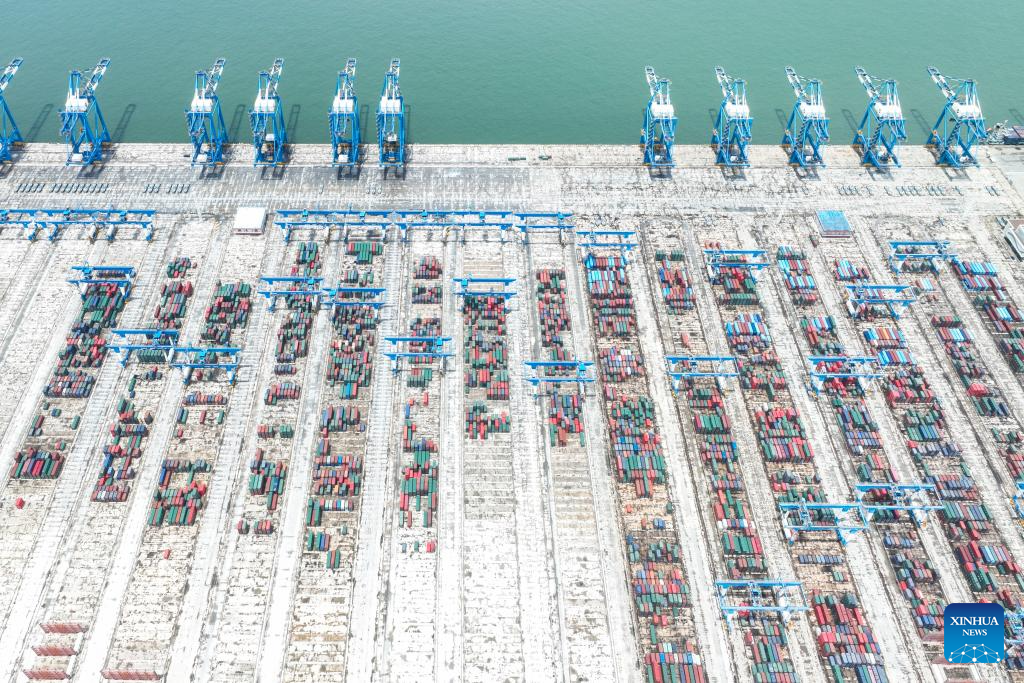
This aerial photo taken on July 22, 2023 shows an automated container wharf of the Beibu Gulf Port in Qinzhou, south China's Guangxi Zhuang Autonomous Region. Qinzhou is a node of the New International Land-Sea Trade Corridor connecting Guangxi and ASEAN countries, and its location is highly beneficial, granting the city an important role in international land-sea transport connectivity. (Xinhua/Cao Yiming)
Hungarian-Serbian railway
The flagship BRI project, Hungarian-Serbian railway, connecting the Hungarian capital Budapest and Serbian capital Belgrade, is progressing smoothly. The project, aiming to help the two countries build logistics hubs and enhance the construction of infrastructures to boost the economic development, will significantly shorten the traveling time for passengers and cargo from the two cities when completed.
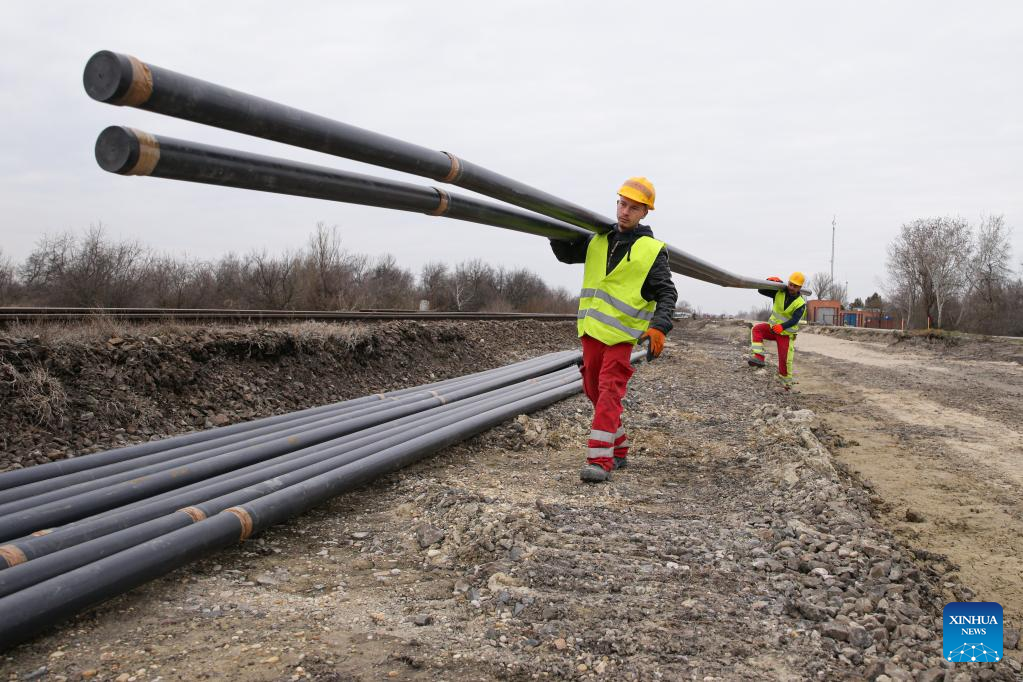
Workers carry electrical conduits at a construction site of Hungary-Serbia railway project in Szabadszallas, Hungary, Feb. 22, 2023. At the offices, construction sites, or even out in the fields, experts, workers from different parts of the world joined together for their common goal that is to build and upgrade the railway linking Budapest in Hungary to Belgrade in Serbia, a major project under the Belt and Road Initiative (BRI), symbolizing deep cooperation between China and Europe. The project, aiming to help the two countries build logistics hubs and enhance the construction of infrastructures to boost the economic development, will significantly shorten the traveling time for passengers and cargo from the two cities when completed. (Xinhua/Zheng Huansong)
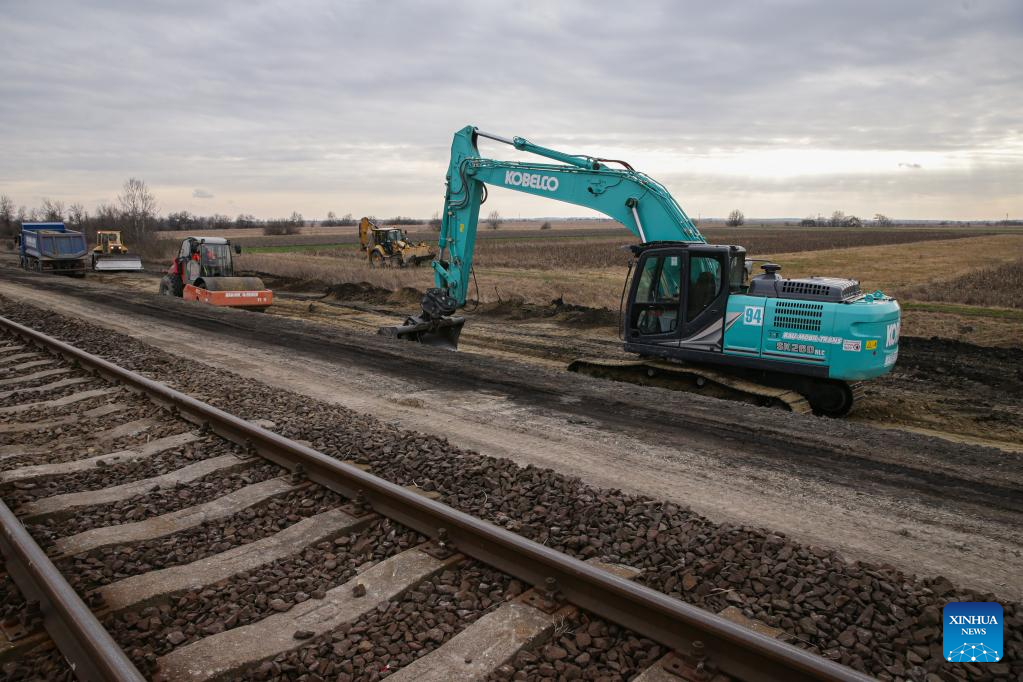
Engineering vehicles are busy at a construction site of Hungary-Serbia railway project in Szabadszallas, Hungary, Feb. 22, 2023. At the offices, construction sites, or even out in the fields, experts, workers from different parts of the world joined together for their common goal that is to build and upgrade the railway linking Budapest in Hungary to Belgrade in Serbia, a major project under the Belt and Road Initiative (BRI), symbolizing deep cooperation between China and Europe. The project, aiming to help the two countries build logistics hubs and enhance the construction of infrastructures to boost the economic development, will significantly shorten the traveling time for passengers and cargo from the two cities when completed. (Xinhua/Zheng Huansong)



